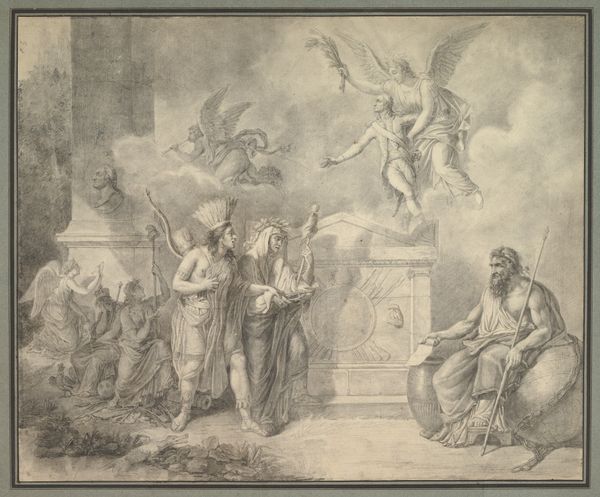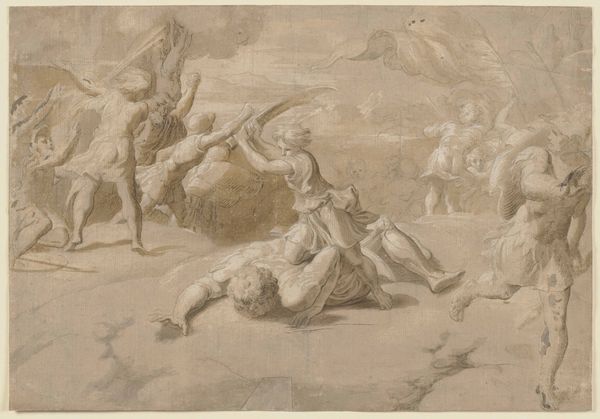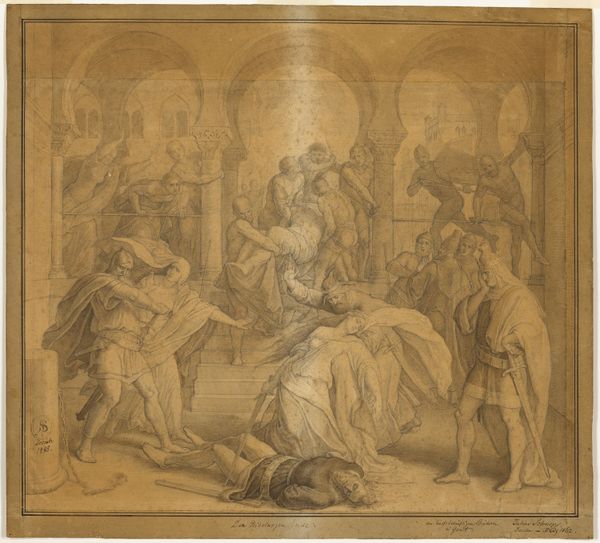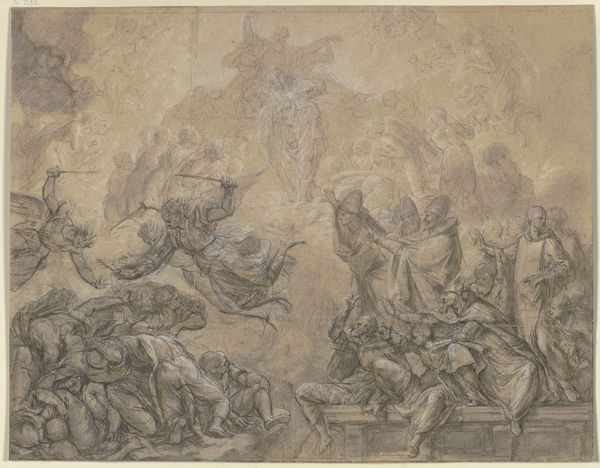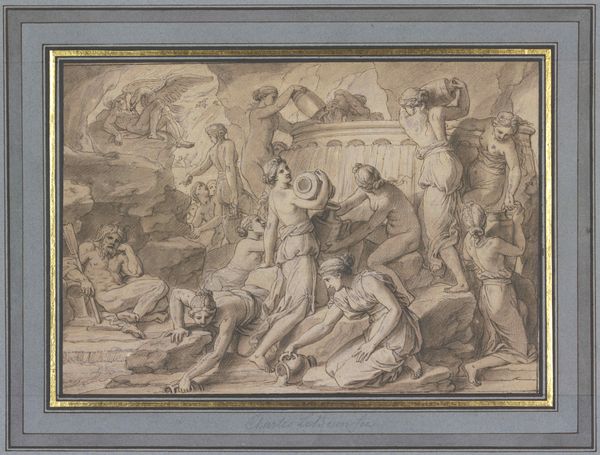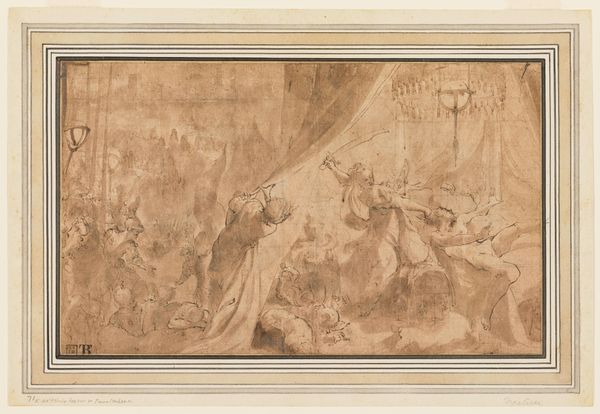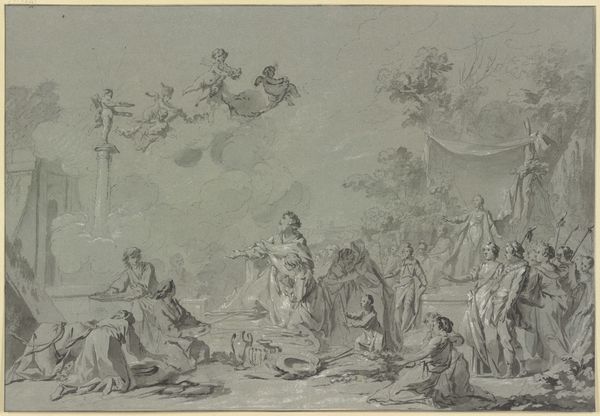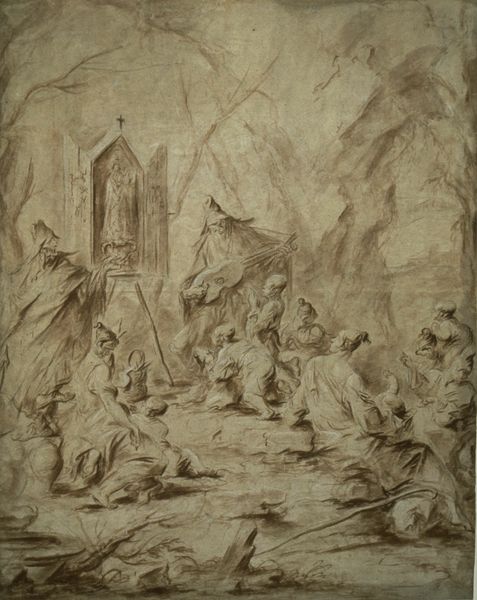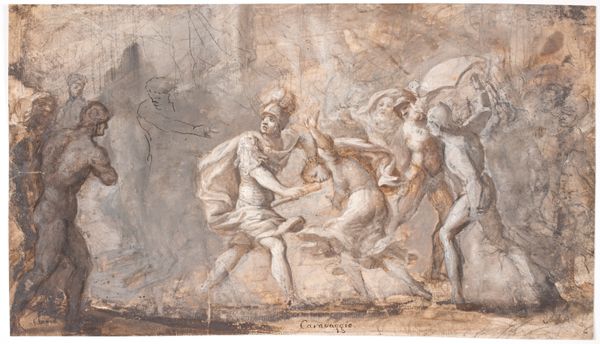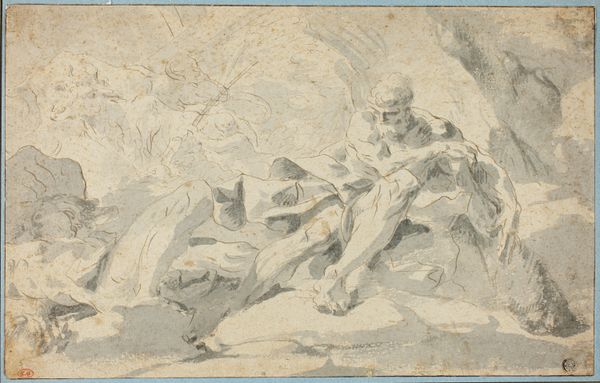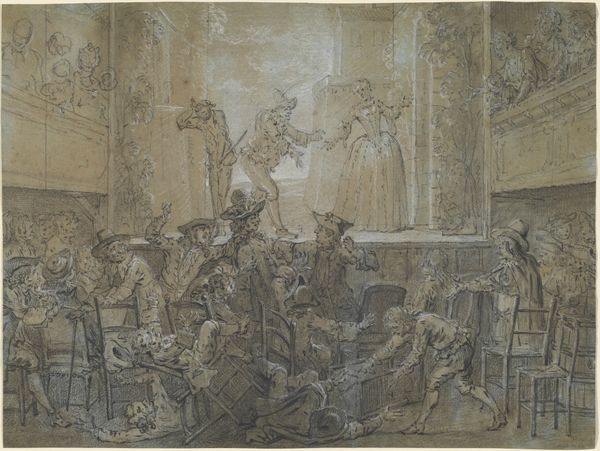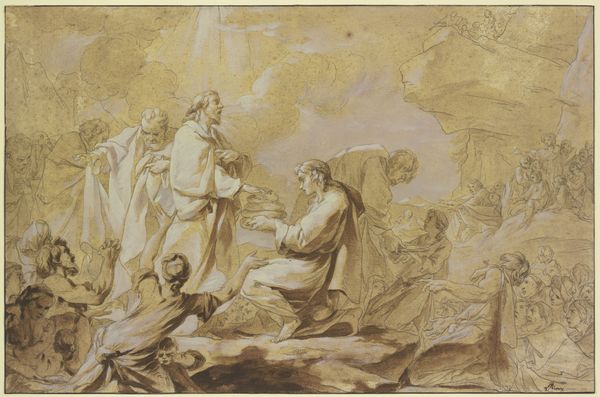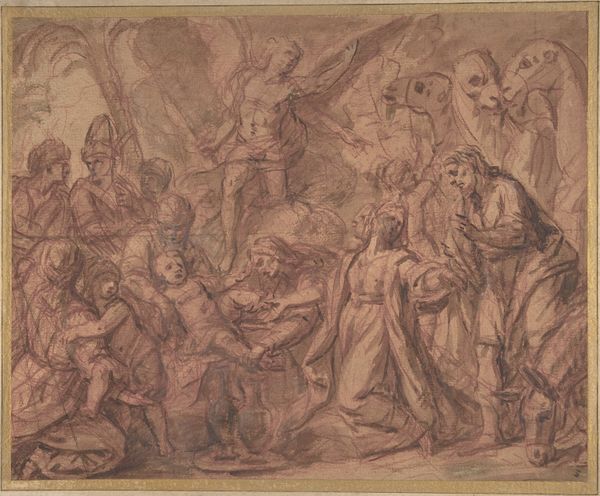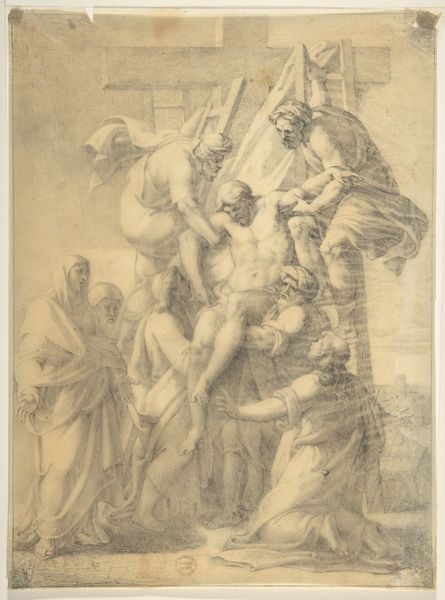
drawing, print, pencil, charcoal
#
drawing
#
neoclacissism
#
allegory
# print
#
landscape
#
charcoal drawing
#
coloured pencil
#
pencil
#
charcoal
#
history-painting
Dimensions: 18 15/16 x 21 7/16 in. (48.1 x 54.5 cm)
Copyright: Public Domain
Editor: Here we have Etienne Pallières' "Washington's Tomb," created sometime between 1794 and 1804. It looks like it was done with pencil, charcoal and perhaps some coloured pencil? It's incredibly evocative; I feel a sense of… mourning, almost performance. What do you see in this piece? Curator: I see a clear attempt to reconcile Neoclassical ideals with the materials at hand, literally. Look at the deliberate contrast: on one side, are those grand figures lifted by what we may assume are angels, classically posed, emerging from soft charcoal swirls; yet just beneath it, notice the Native American figures. Pallières presents them using very direct marks, lacking any "angelic assistance." How does this strike you? Editor: That’s a striking juxtaposition. The rougher, more earthly representation of the indigenous figures compared to the idealized Washington suggests a social hierarchy even in death. Curator: Precisely. Now consider the materials. Cheap and easily sourced charcoal and pencil were the workhorses of draftsmen making their name. Are we really meant to focus on 'high art', here? Or do you find this drawing challenging those boundaries, displaying instead the means and methods used in producing an idea that has an element of statecraft behind it? Editor: I guess that makes sense. So you are saying Pallières isn't just celebrating Washington but showing us something about how national heroes are *made,* how this memorial becomes a materialization of power? The type of materials matter as much as the myth. Curator: Exactly! Think of this drawing not just as a depiction, but as a physical trace of the complex social forces at play in a new nation forging its identity and material legacy. Editor: That really changes how I see it. I’ll be considering the physical labor and context much more from now on!
Comments
No comments
Be the first to comment and join the conversation on the ultimate creative platform.
